- HubPages»
- Technology»
- Consumer Electronics & Personal Gadgets»
- Portable Electronics
Panasonic DMC-GH2 - Professional Quality MidRange MDSLR
Who is Lumix
Lumix is Panasonic's brand of digital cameras. These cameras range from the hobbiest pocket point-and-shoot models to digital SLRs with high end super-zoom point-and-shoot cameras in between.
Many Lumix models are fitted with Leica lenses that have been designed by Leica's German optical engineers. In fact Lumix still manufactures Leica's point and shoot cameras while the higher end Leica models are strictly Leica through and through. Though the lenses are primarily Leica all Lumix cameras are built in Japan.
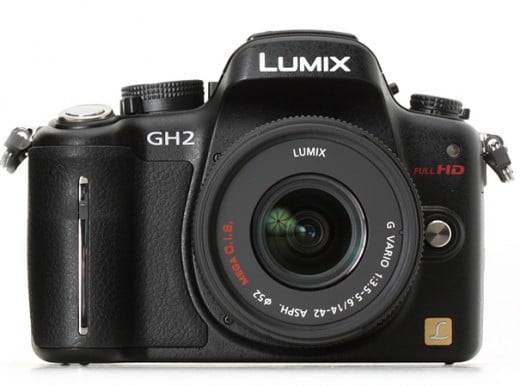
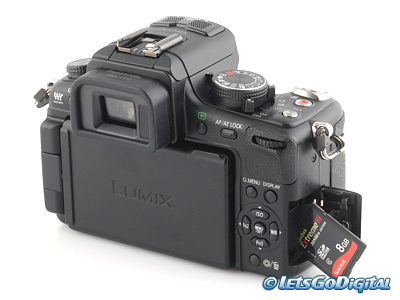
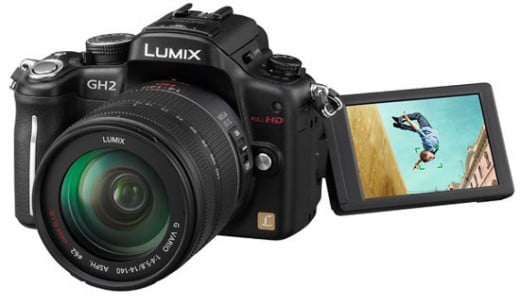
Lumix DMC-GH2
When Lumix launched the GH1, its second Micro Four Thirds camera, it was the first Micro Digital Single Lens Reflex (MDSLR) camera from the company that could also record video. And it wasn't so much that it could record video, it was the Lumix outfitted the camera with a fast lens specifically designed for both still and motion capture. Unfortunately the lens made the camera rather expensive at over $1,200.00 with a lower resolution that the GH2.
With the G2 Lumix determined to improve the dual personality of its cameras by not only allowing high-definition video, but by controlling the motion capture process with improved frame rate, aperture control, and shutter speeds.
Lumix latest offering, the GH2, seeks to improve on that even farther by using a sensor that is actually capable of capturing sixteen (16Mpxl) megapixels on an eighteen (18Mpxl) sensor. In other words the sensor is purposely larger than required to improve on the aspect ratios of the recorded movie. So, for example, where the G2 was designed to capture an aspect ratio of 16:9 the images suffered from drop-off at either side. With the larger sensor the 16:9 image is clear and crisp across the entire width.
Additionally the sensor is capable of converting the image to file at a much faster rate while retaining a high degree of resolution. In fact this arrangement can capture motion at 1080i at a frame rate of fifty (50fp/s) or sixty (60fp/s) frames per second or 1080p at frame rates of 25fp/s; double what was possible with the G2 or GH1.
Because of this faster frame rate the camera also has to check auto focus (AF) more often and much faster as well; which it does. All of this to keep up with the phenomenal frame rate.
The viewfinder has also been enlarged over the GH1 showing 852 x 600 pixels (rather than 800 across). This allows an aspect ratio of 16:9 (the HD standard) with 3:2 previews. This effectively does away with post-video cropping.
The screen tilts and swivels away from the body of the camera. It is also a capacitive multi-touch screen allowing you to make menu selections from the screen itself.
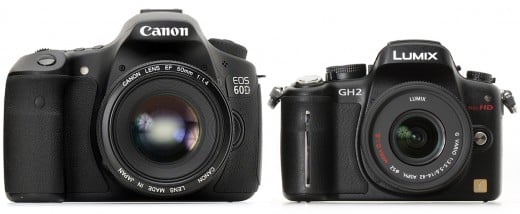
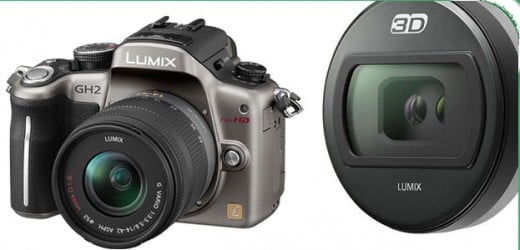
Other Features
The GH2 might look very similar to the GH1, but there is a great deal of difference between the two cameras. These include:
- New sensor - multi-aspect Live MOS with 18.3 million total pixels
- ISO range 160 - 12,800 (vs 100-3200)
- Sensor capable of 1080p at 60 or 50 fps still output as 60i/50i
- Faster sensor read-out promises faster AF and smoother viewfinder image (less tearing)
- Larger effective view coverage to match multi-aspect shooting
(852 x 600 rather than 800 x 600 pixels) - Touch-sensitive LCD screen
- 3D Lens (optional)
- Updated menu system
- Direct movie shooting button on top of camera
- New battery (DMW-BLC12E) (1,200mAh)
Pricing
The Lumix retails for less than the three named competitors above at $999.00 without a lens or $1,100.00 with at 14~42mm hybrid lens. Of course e-tailers such as Amazon and Buy dot com have the camera for slightly cheaper.
For a full list of specifications see the table below.
Panasonic GH2
| |
|---|---|
Camera Type
| Digital Interchangable Lens
|
Sensor
| 4/3 type MOS ('Live MOS sensor')
|
18.3 million total pixels
| |
16.0 million effective pixels
| |
RGB (Primary) color filter array
| |
Mount
| Micro Four Thirds mount
|
Sensitivity
| ISO 160-12800 in 1/3EV steps
|
Movie mode
| AVCHD
|
1920 x 1080p 24fps (Approx 23 or 17 Mbps)
| |
1920 x 1080i 60fps (Approx 17 or 13 Mbps)
| |
1280 x 720p 60fps (Approx 17 or 13 Mbps)
| |
Motion JPEG:
| |
1280 x 720, 30fps
| |
848 x 480, 30fps
| |
640 x 480, 30fps
| |
320 x 240, 30fps
| |
White Balance
| Auto / Daylight / Cloudy / Shade / Halogen
|
Flash / White Set 1, 2, 3, 4 / Color temperature setting
| |
Exposure Control
| Program AE, Aperture Priority AE, Shutter Priority AE, Manual, Auto
|
Light Metering
| 144-zone multi-pattern sensing system
|
Still Image Modes
| Portrait (Normal/Soft Skin/Outdoor/Indoor/Creative)
|
Scenery (Normal/Nature/Architecture/Creative)
| |
Close-up (Flower/Food/Objects/Creative) / SCN (Peripheral Defocus)
| |
Night Portrait/Night Scenery/Sunset/Party/Sports/Baby 1,2/Pet
| |
Movie Image Modes
| Portrait (Normal/Soft Skin/Outdoor/Indoor/Creative)
|
Scenery (Normal/Nature/Architecture/Creative)
| |
Close-up (Flower/Food/Objects/Creative)
| |
Scenery (Peripheral Defocus/Night Portrait)
| |
Night Scenery/Sunset/Party/Sports/Baby 1,2/Pet
| |
LCD monitor
| Touch sensitive 3.0" TFT LCD monitor
|
Multi-angle swing and tilt (180 swing, 270 swivel)
| |
460,000 dots
| |
Approx 100% frame coverage
| |
Microphone
| Built-in stereo
|
Socket for external mic
| |
Dimensions
| 4.9 x 3.5 x 3" [142 x 90 x 76 mm]
|
Weight (body only, no card/battery)
| 13.9 oz (394 g)
|
Standard Accessories
| Battery Charger, Battery Pack, Body Cap
|
AV Cable, USB Connection Cable
| |
Shoulder Strap, Stylus pen, CD-ROM
|
Coda
This is clearly a direct competitor to the Nikon D7000, the Pentax K-5 and the Canon EOS 60D. Where the Lumix GH2 differs is in it's better than average rear mounted screen (except for Canon's 60D), it's better than expected motion capture capabilities and the fact that it is even set up for 3D motion and image capture.
Disclaimer
The author was not compensated in any way, monetarily, with discounts, or freebies by any of the companies mentioned.
Though the author does make a small profit for the word count of this article none of that comes directly from the manufacturers mentioned. The author also stands to make a small profit from advertising attached to this article.
The author has no control over either the advertising or the contents of those ads.








